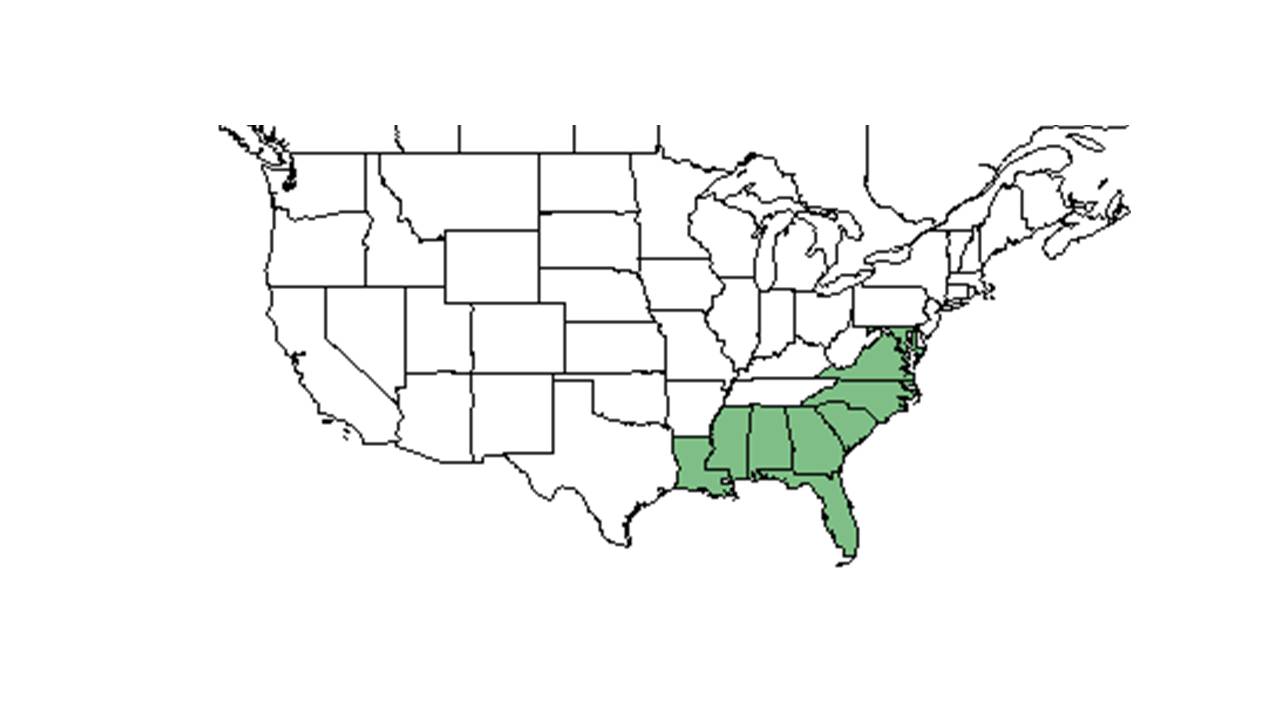Difference between revisions of "Desmodium tenuifolium"
(Created page with "{{italic title}} <!-- Get the taxonomy information from the NRCS Plants database --> {{taxobox | name = Desmodium tenuifolium | image = Insert.jpg | image_caption = | regnum...") |
|||
| Line 22: | Line 22: | ||
==Ecology== | ==Ecology== | ||
===Habitat=== <!--Natural communities, human disturbed habitats, topography, hydrology, soils, light, fire regime requirements for removal of competition, etc.--> | ===Habitat=== <!--Natural communities, human disturbed habitats, topography, hydrology, soils, light, fire regime requirements for removal of competition, etc.--> | ||
| + | Found in mesic and dry type savanna in North Carolina. Mesic savannas in North Carolina consist exclusively of Pinus palustris. Dry savannas in North Carolina typically occur on the high, central portion of the more dome-shaped islands, or where the soil is coarse textured and well drained.Needs frequent burns.<ref name="Walker and Peet 1984"/> | ||
===Phenology=== <!--Timing off flowering, fruiting, seed dispersal, and environmental triggers. Cite PanFlora website if appropriate: http://www.gilnelson.com/PanFlora/ --> | ===Phenology=== <!--Timing off flowering, fruiting, seed dispersal, and environmental triggers. Cite PanFlora website if appropriate: http://www.gilnelson.com/PanFlora/ --> | ||
===Seed dispersal=== | ===Seed dispersal=== | ||
===Seed bank and germination=== | ===Seed bank and germination=== | ||
===Fire ecology=== <!--Fire tolerance, fire dependence, adaptive fire responses--> | ===Fire ecology=== <!--Fire tolerance, fire dependence, adaptive fire responses--> | ||
| + | found in savannas that are frequently burned<ref name="Walker and Peet 1984">Walker, J. a. R. K. P. (1984). "Composition and Species Diversity of Pine-Wiregrass Savannas of the Green Swamp, North Carolina." Vegetatio 55(3): 163-179.</ref> | ||
===Pollination=== | ===Pollination=== | ||
===Use by animals=== <!--Herbivory, granivory, insect hosting, etc.--> | ===Use by animals=== <!--Herbivory, granivory, insect hosting, etc.--> | ||
| Line 31: | Line 33: | ||
==Conservation and Management== | ==Conservation and Management== | ||
==Cultivation and restoration== | ==Cultivation and restoration== | ||
| + | ==Photo Gallery== | ||
==References and notes== | ==References and notes== | ||
| − | |||
Revision as of 18:13, 10 June 2015
| Desmodium tenuifolium | |
|---|---|

| |
| Scientific classification | |
| Kingdom: | Plantae |
| Division: | Magnoliophyta - Flowering plants |
| Class: | Magnoliopsida – Dicotyledons |
| Order: | Fabales |
| Family: | Fabaceae ⁄ Leguminosae |
| Genus: | Desmodium |
| Species: | D. tenuifolium |
| Binomial name | |
| Desmodium tenuifolium Torr. & A. Gray | |

| |
| Natural range of Desmodium tenuifolium from USDA NRCS Plants Database. | |
Contents
Description
Distribution
Ecology
Habitat
Found in mesic and dry type savanna in North Carolina. Mesic savannas in North Carolina consist exclusively of Pinus palustris. Dry savannas in North Carolina typically occur on the high, central portion of the more dome-shaped islands, or where the soil is coarse textured and well drained.Needs frequent burns.[1]
Phenology
Seed dispersal
Seed bank and germination
Fire ecology
found in savannas that are frequently burned[1]